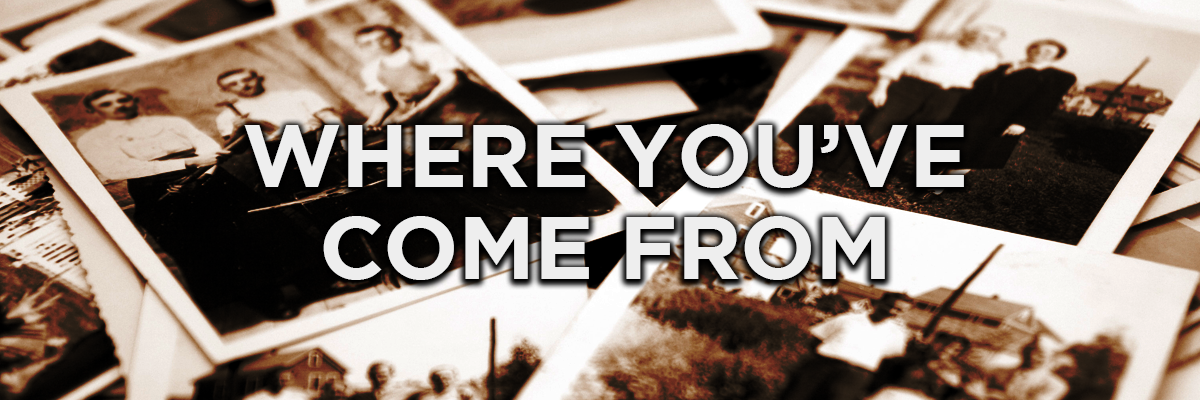“That’s an excellent suggestion, Miss Triggs. Perhaps one of the men here would like to make it.”
- Children
- Gender
- Race

“That’s an excellent suggestion, Miss Triggs.
Perhaps one of the men here would like to make it.”
It’s not by chance that I got the name Penelope, I am convinced of it. The more I learn about her and the more I live my life, the more I see the resonance. This weekend I took part in @WomenEdBookclub’s slow chat, hosted by Mary Beard and inspired by her book, Women and Power: a manifesto. In her book, she refers to Penelope, wife of Odysseus, who is silenced by her own son, Telemachus. She refers to this snippet from Penelope’s story as a “nice demonstration that right where written evidence for Western culture starts, women’s voices are not being heard in the public sphere” and how “growing up, as a man, is learning to take control of public utterance and to silence the female of the species”.
Mary Beard goes on to explain how this plays out in the modern world too, and uses the thirty year old cartoon by Riana Duncan, also shown above. “That’s an excellent suggestion, Miss Triggs. Perhaps one of the men here would like to make it.” It resonates, because it is my lived experience. And it should have all of us scrolling back through a mental catalogue of similar meetings where this may have happened before our very eyes – eyes and ears that weren’t trained to spot it perhaps, and a mouth that wasn’t able or willing to call it out.
One of the things that troubles me, is how we manage to tackle these issues without polarising into men and women, good and bad, feminist and sexist, and without alienating people. I think that the starting point has to be from a place of trying to understand socialisation, conditioning – the deep process we go through in our lifetimes and that builds on centuries of accepted wisdom, the process of being taught explicitly and implicitly what the world means. You have to accept that this happens, and you can’t believe that you were somehow brought up to be beyond the influence of wider society, no matter how “woke” your upbringing was.
Categorising, characterising, conditioning
By example, from the moment my children were born, I did as all good mothers of all animal species do. I drilled them on simple categorisations: day and night (if anyone knows my story of sleepless babies, you’ll know that one took forever!), good and bad, hot and cold, edible and not edible, acceptable and not acceptable. The categorisation process gets really sophisticated early on and we learn to group things into concepts like seats and not seats – you can sit on a low, square stool but you shouldn’t sit on a coffee table that looks to all intents and purposes to the untrained eye like a low, square stool. There is a catalogue of animals that make you go “awwwww” and those that make you go “ewwww” and so on.
We also categorise people by gender, race, age, weight, how they move, talk, and more. This is the way we learn what is safe and unsafe, what is socially acceptable and not. How many times have you told your children not to speak with strangers and then later berated them when they don’t greet a stranger politely that you have deemed to be worthy of their respect? You should have seen the uproar in my house when I invited my Twitter friend to stay the night before our BAMEed conference when I don’t really know who she is and I have never met her face to face before, having drilled my children on internet safety and who they can legitimately call their friends!
It should be noted that this is also the way that we subtly start to embed the concepts of who has the right to power over things like speech and more. Mary Beard uses the Penelope example to start the discussion about men’s historically accepted rightful place as orators and women’s seeming deficiency in this arena. I strongly believe that no-one, no matter their declarations of gender or race blindness, is exempt from being the product of their socialisation and conditioning. And even if they deem themselves to be absolutely pure from any contaminating effects of this societal conditioning, no-one can be accepted as truly equal just by virtue of the fact that they deem themselves to be worthy of being treated equally. Finally, unequal treatment, bias, whether it be sexist or racist in its form, is not something that is always clearly defined, binary and explicit. I don’t agree that people can be categorised into racist and not racist, sexist and not sexist like some kind of Harry Potter sorting hat defines your house.
I have to clarify here, that of course, there are some people and their actions that put them squarely and without dispute into the racist and/or sexist category. But what I like about Mary Beard’s book is that it explains how the subtle and not so subtle power struggles between men and women are perpetuated in ways that are so deeply entrenched, that it is not a switch we can flick, a decision we can make or a quick change we can implement. We need to question ourselves and those around us to see where this is playing out in our own lives. One last thing to point out, at the risk of being really obvious: just because you are a woman, doesn’t mean you are pro-women, feminist or not prone to perpetuating gender stereotypes just as being a man, doesn’t make you automatically pro-men, sexist and ignorant about power imbalance.
I got the power!
All discourse about women, about race and so on is about power. It is about the balance of power and why it sits where it does. Mary Beard gives us a Western historical whistle-stop tour of why power lies squarely with men and how this plays out in her own lived experience as a woman, albeit a woman with much power compared with others, both male and female.
Here’s a story from my lived experience that might illustrate some of the power imbalances mentioned above. I’d be fascinated to hear what you think:
One of my previous male bosses back in the day, commented quite vociferously and negatively on my choice of footwear. I was wearing admittedly clumpy, comfortable shoes on a freezing cold, wet day where we were attending a meeting with external stakeholders. He was wearing brown, lace up, brogues, not too dissimilar. It knocked the wind out of my sails and made me self-conscious throughout the day that we spent together travelling to and from the meeting. Ironically, a female stakeholder spontaneously commented on how much she loved my shoes the same day.
Said male boss also liked to hold up one of our female colleagues as an example; often commenting on how she is “always so well turned out”. He correlated her consistently “smart” appearance to the quality of her work. My experience of her was indeed as someone who always wore a full palette of make-up, straightened her hair, changed into impossible-looking heels from her walking-to-work trainers every morning, and was very vocal about her need to restrict herself from enjoyment of food in order to maintain her very thin figure. My male boss saw this as a commitment to discipline, rigour and a visual sign that the quality of her work was also of this same calibre.
My experience of myself and from feedback I have consistently had, is as someone who is also very committed to my work, to quality, rigour, creativity and a certain flexibility and resilience. This could be reflected in my sensible shoes, my all-weather cyclist mind-set, and the fact that make-up and hairdos are just prone to becoming a mess anyway so why bother? I wash my face and brush my hair and also change from my cycling gear into my office get-up to indicate my readiness for serious work. Mentioned once, this comparison might have passed me by, but mentioned regularly, it began to bother me and I spoke out on more than one occasion to see if my boss understood that his bias was potentially shaping the way our work and worth would be regarded. Blank looks. Suggestions of being over-sensitive. Hints that I was dissing my female colleague for her sartorial choices and that because we are all feminists, we can all wear what we like. “I wear these clothes/heels/make-up for me” is what is often said. But can we divorce our choices from conditioning and accepted beliefs regarding acceptable female attire? Is there really freedom of choice when all choices seem to come with a raft of associations?
This clothing preference boss thing has become linked in my experience to another incident with my most-feminist-friend at work. It should stand to illustrate that even as a self-declared feminist and ‘bloody difficult woman’, this colleague could also be prone to bias resulting from deep and subtle conditioning. We all are, that’s my point.
This is how it happened. During a period, when perhaps subconsciously I must have felt it might be interesting to test out whether a leaning towards the more ‘power dressing’ end of the spectrum might serve my interests and have my voice heard a little more seriously, I started wearing smart black, navy blue or grey, tailored dresses and heels around the office. After all, the boss had made it clear time and again that a woman who is well turned out is a woman who means business and demands respect for the quality of her work. My most-feminist-friend noted my changed wardrobe choices, sidled up to me at the sinks in the ladies loo and uttered between hushed lips: “are you having an affair, Penny?” Remember the story of Penelope and the affair she also didn’t have?
How would you interpret this? The way I saw it was this: she had hit on something I was perhaps not fully aware of at the time. I was indeed trying to please a man – my boss. The attempt at pleasing a man by a heterosexual woman, must have been interpreted by my colleague as connected to a woman’s sexuality, hence the conclusion of an affair and my newly heightened well-turned out/sexually attractive state. I wasn’t trying to hit on my boss but I was trying out what it felt like to be wearing the uniform of accepted feminine work wear and must have been keeping an eye to see if it altered attitudes to my work.
The missing piece for me was having the opportunity to sit down with all the players in this great story and to spend some time working together to deconstruct and analyse what was going on here. Wouldn’t it be wonderful to get together as a group of people, all of whom I know would say they believed in equality of the sexes, and read up on, analyse and discuss this very dynamic that played out in our working relationship all that time ago. Now that would be a satisfying experience I’m sure.
Postscript: My dear partner has pointed out that all of this is an example of white-woman, privileged, feminist discourse and that it doesn’t cover anything meaningful around race, inter-sectionality and other important issues. I hold my hand up and once I have spent some time educating myself further on this, I will get back to you. I’m reading is “Why I’m No Longer Talking to White People About Race by Reni Eddo-Lodge to keep me moving on my journey. You can read this excellent Guardian Long Read by her here. All suggestions to help me learn are gratefully accepted.
By Penny Rabiger Ex-teacher, ex-director @TheKeySupport@ChallengePartnr. FRSA. Chair of Govs. @BAMEedNetwork Passionate about education, social mobility. Views mine, some yours
)

